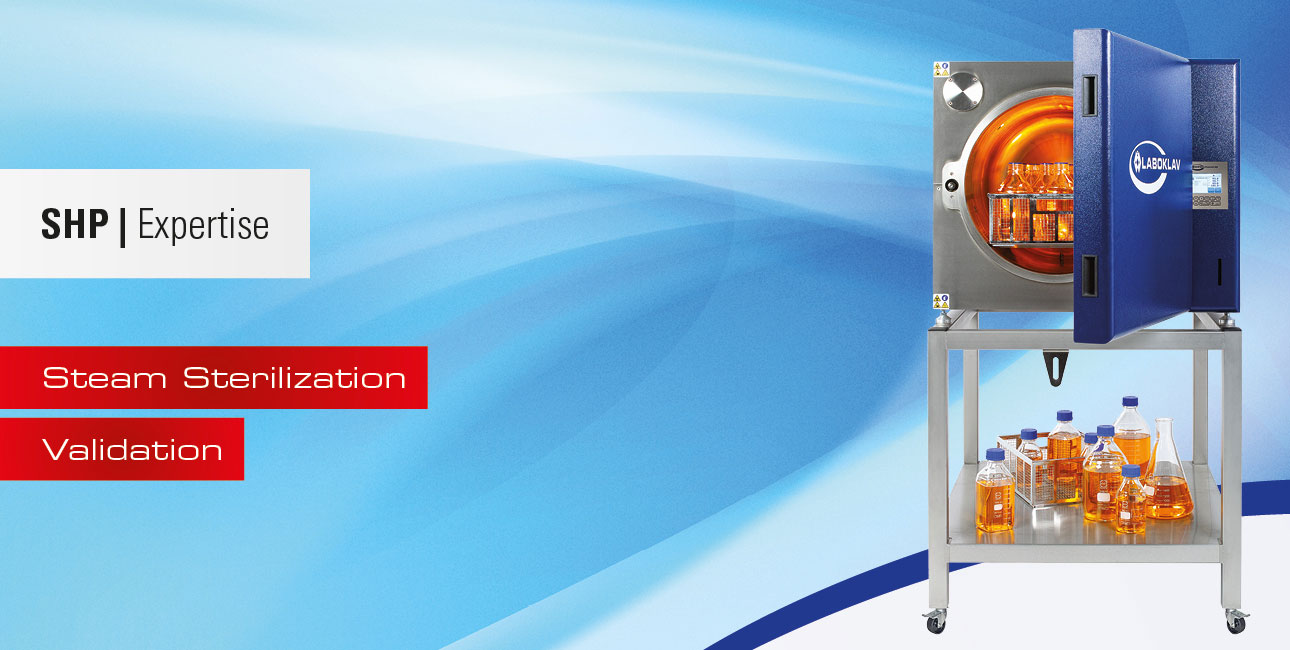The following process describes the individual steps of validating a sterilization process according to applicable standards.
Validation
In the manufacturing and sterilization of medical devices for patient care, the legislator mandates the use of suitable, validated procedures. Likewise, pharmaceutical sterile goods and products for medical purposes must be produced using verifiable processes[1].
Since the sterilization success of an individual product cannot be non-destructively tested and any test could re-contaminate the product, reliable sterilization is only possible through the use of theoretically and experimentally confirmed procedures.
The responsibility for the regular validation of these sterilization processes lies with the operator.
The manufacturer can support with expertise and state-of-the-art measurement technology, for example, for validation according to EN 554.
Validation in the Manufacture and Sterilization of Medical Devices – EN 554
Validation refers to a documented procedure that is used to determine, record, and evaluate the necessary results to demonstrate that a process consistently meets the established specifications.
Validation consists of two essential components:
1. Commissioning
This involves documenting and verifying that the sterilization device has been procured, installed, and put into operation according to technical specifications. It must also be ensured that it works reliably within the defined parameters, provided that the operation is in accordance with the operating instructions.
Thus, commissioning includes identifying the device, its technical acceptance, and testing the operating materials and environmental conditions used.
2. Performance Assessment
In this step, it is demonstrated and documented that the sterilization device, once commissioned, produces sterile products when the defined procedure is applied.
The performance assessment includes:
-
calibration of the test equipment used,
-
a vacuum test,
-
thermoelectric tests for all device configurations and sterilization programs to be validated,
-
evaluation of measurement results as well as drying and visual inspection tests,
-
and, if necessary, a microbiological test using biological indicators.
Validation Process
Preparation
-
Adjustment of thermocouples in the calibration oven
Commissioning
-
Verification of complete documentation
-
If necessary: perform required maintenance, calibrations, or training
-
Check environmental conditions at the site
-
Check operating materials, e.g.,:
-
Power supply
-
Utility water and supply water according to EN 285
-
Compressed air supply (if relevant)
-
Accessories such as batch printer, Bowie & Dick test set, possibly Helix test
-
-
Adjustment of temperature sensors
-
Adjustment of pressure sensors
-
Perform a vacuum test
Performance test with standardized load
-
Repeat vacuum test
-
Test for venting and steam penetration (Bowie & Dick test, possibly Helix test)
-
Measurement of temperature distribution in the empty chamber
-
Test of sterilization performance with partial load
-
Check sterilization and drying performance with full load (e.g., textiles)
Performance assessment of the configurations to be tested (representative loads)
-
Establish workflows before and after sterilization by the operator
-
Define configurations to be tested (sterilized items, packaging, loading patterns) and the associated sterilization programs
-
Perform sterilization tests with the defined configurations (each repeated three times)
-
Recalibrate the thermocouples in the calibration oven
[1] MPBetreibV, §4 (2): The processing of medical devices that are intended to be germ-free or sterile for use must be carried out using appropriate validated procedures, taking into account the manufacturer's instructions, so that the success of these procedures can be reliably ensured and the safety and health of patients, users, or third parties is not compromised. This also applies to medical devices that are disinfected or sterilized before their first use.






